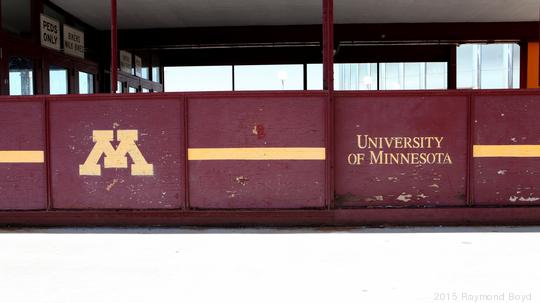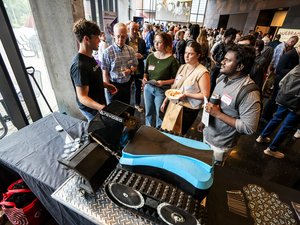
The University of Minnesota is a research giant. Sure, most colleges and universities have an active team of researchers, but few institutions churn out inventions at the same rate as the U.
Last year, the U was named by the National Science Foundation as one of the nation's top 10 research institutions. A report released by the university in late 2017 estimates that it has had an $8.6 billion impact on Minnesota, and that its inventions generated more than $320 million for the state between 2009 and 2015.
Simply put, the University of Minnesota is, and always has been, at the heart of the state's innovation economy. Its faculty have created everything from new apples to life-saving drugs.
Below are several of the U's most interesting innovations, listed in no particular order:
3D Printed Bionic Eye The University of Minnesota owns powerful 3D printers that can create things like artificial skin and functional organs. Now, researchers at the U are setting their sites on a new challenge: creating a bionic eye. Using a new process involving liquit metal, they found a way to 3D print electronics onto a curved surface. Each electrode on the artificial eye contains a light receptor that could be used to help bypass a damaged retina, effectively converting light into electricity. It's a work in progress, but the team estimates that it could be ready for human trials within two or three years.
New Apple Variety At this year's State Fair, the University debuted a new variety of apple that researchers had been developing for more than two decades. Called First Kiss, the apple is somewhat similar to a Honeycrisp (also developed at the U), but is ready to harvest earlier in the season. First Kiss is now available, but supply will be limited, the U said, for the next few years as the trees mature and bear more fruit.
Researchers at the U have been developing apples for 140 years. First Kiss is the 27th apple to be released by the breeding program, and 18 of those 27 apples are still available today. How do you like them apples?
Early Detection of Alzheimer's Disease The University of Minnesota is currently partnering with a Toronto-based startup called RetiSpec to develop a tool that will be able to screen for Alzheimer's disease. The system scans a patient's eye to detect small quantities of a protein called beta amyloid long before they collect in a large enough cluster to form plaques in the brain – a biological sign of Alzheimer's progression.
Researcher Sets Record for Most Winters in South Pole Minnesotans usually think they're pretty good about handling the cold, but University of Minnesota Astrophysicist Robert Schwarz puts the rest of the state's residents to shame. Schwarz made history at the bottom of the world this year when he clocked his 14th winter in the South Pole – a new record. Winters in the southern hemisphere are, as you can imagine, impossibly brutal. There's six months of darkness, ice as far as the eye can see, sub-zero temperatures and no flights (in or out) from October to February.
Schwarz watches over the Keck Array, a cluster of microwave telescopes that are observing echoes of the Big Bang embedded in the oldest light in the universe, the Cosmic Microwave Background.
THROWBACKS
These next two inventions date back decades, but they're so interesting and important that we couldn't resist including them in this list:
The Retractable Seatbelt Automobile safety was virtually nonexistent in the 1950s and 1960s. University of Minnesota researcher James "Crash" Ryan aimed to change that. Armed with a $1,500 grant from the U, a modified 1941 Buick and a Gopher football helmet, Ryan turned himself into a human crash test dummy for the sake of science. Ryan made a name for himself by dropping cars from cranes, crashing vehicles into walls and conducting a number of other experiments. He's credited with a number of safety innovations, including the retractable seatbelt. Ryan's research in automobile safety continued until his retirement in 1963, and the data he collected played a major role in Congress passing the first meaningful national traffic safety act.
The Heart Drug That Saved a President (and E.T.) When former President Dwight Eisenhower suffered a severe heart attack in May 1967, his physicians at Walter Reed Hospital and Washington D.C. turned to Minnesota for answers. University of Minnesota Physiologist Marvin Bacaner had developed a drug called bretylium tosylate to save heart attack victims.
Bacaner sent a supply of bretylium to D.C., and it is believed to have saved the president's life. The drug was officially patented in 1978, earning the University of Minnesota millions in royalties. Bretylium was also used in E.T. to save the alien's life.








